Vedic Science
Nava Mani: The nine Vedic pearls of Brihat-Samhita
Published
5 years agoon
By
Vedic Tribe
The Nine Pearls, sometimes known as the Nava Moti (or nine gems, or “mani”), are a group of sacred gemstones described in the Vedic text known as the Garuda Purana. Enumerated as the Oyster Pearl, Conch Pearl, Cobra Pearl, Boar Pearl,Elephant Pearl, Bamboo Pearl, Whale Pearl, Fish Pearl, and Cloud Pearl, these gems were later documented in the treatise Brihat-Samhita (“The Great Compilation”) of Varahamihira, the Indian mathematician.
The first documented contact with these artifacts by the Western world is described in the sole volume of 18th Century scientist Albertus Seba, entitled Cabinet of Natural Curiosities. Therein, a large collection of Bezoar stones and non-oyster pearls were hand-sketched, and the collection of these items were on display in a forum which was the precursor of the modern day museum. Today, the original 446-plate volume, part of the greater work Locupletissimi Rerum Naturalium Thesauri Accurata Descriptio, is on permanent exhibit at the Koninklijke Bibliotheek in The Hague, Netherlands.
Shankha Mani: Conch Pearl
A Conch Pearl is formed rarely within the digestive tract of any of a wide variety of species within the greater Conch family. The colors vary from white to pink to yellow to a deep reddish tone. The shapes vary greatly, and no two Conch Pearls are alike, making a matching pair an exceeding difficulty (and expensive) proposition. It is presently impossible to cultivate a Conch Pearl as the formation is not nacre, but an intestinal deposit making the gem most closely fall into the category of bezoar stone. It is very difficult to find a round Conch pearl, or any Conch pearl above 2 carats (400 mg).
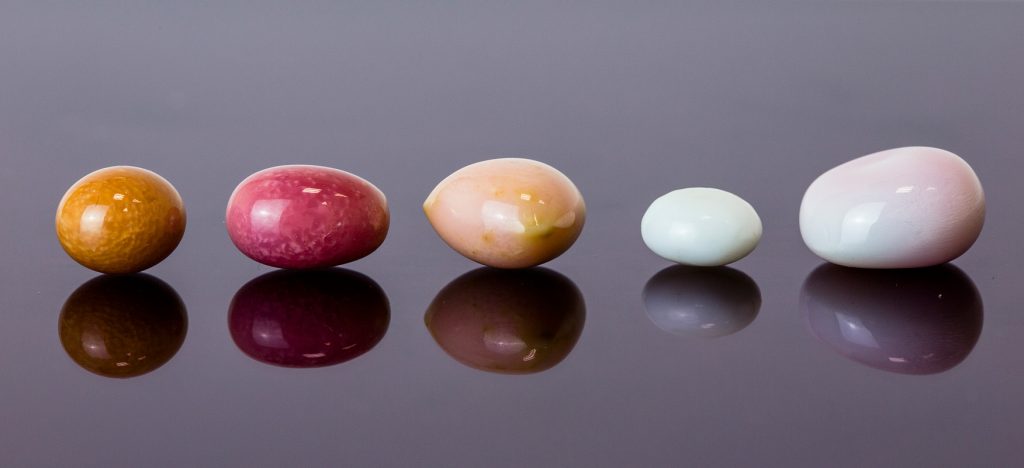
Conch Pearl
The Garuda Purana states in Chapter LXIX (69) “Pearls found… in the entrails of conch-shells, are devoid of lustre, though possessed of other auspicious virtues. Of the eight species of pearls described by the conoisseurs of gems, those obtained from conch shells and the temple of elephants should be deemed as standing in the bottom of the list as regards colour and brilliancy. A conch shell pearl is usually as big as a large Kona (point of rapier) and assumes a color similar to that of the mollusk it is found in.”
Varahamihira states in Brihat-Samhita, Chapter 51 “The pearl born of conch shell is round, lustrous, beautiful and moonlike… The pearls from conch shells… ought not to be perforated and as they possess inestimable virtues or excellences, no price has been fixed for them by the authorities.”
Naga Mani: Cobra Pearl
Cobra Pearls are typically egg-shaped and translucent, transparent, or semi-translucent; roughly 2 cm length, 2 cm diameter and weighing about 5 grams, appearing in a range of colors (golden, green, red, blue, pink, white, black).
The Garuda Purana states in Chapter LXIX (69) “A pearl found in the hood of a cobra is round in shape like the one obtained from the mouth of a fish and emits a dazzling effulgence from its own natural seat. After copious washing such a pearl assumes the lustre of a well-polished sword. The possessor of a cobra or serpent pearl meets with rare good fortune, and becomes a pious and illustrious king in time, with a treasury full of other species of precious gems. Dark clouds, hung down and heavily charged with rain, and roaring with the voice of the eternal trumpets blown upon at the time of universal dissolution and spangled with flashes of lightning, closely envelop the sky, at the time, when the Bramhana, well versed in the religious and ceremonial proceedings, after inquiring about the acquisition of such a pearl, and having done the necessary rite of protection unto it, formally takes it into the interior of the house of its possessor. Neither the serpents, nor the Rakshas (a type of demon), nor diseases, nor disturbances of any kind would assail the man amidst whose treasure such a snake pearl would lie.”

Naga mani – Cobra Pearl
Varahamihira states in Brhat Samhita, Chapter 51 “The serpents of the lineage of Taksaka and Vasuki and those that move at will, have bright, blue-tinged pearls on their hoods. If Indra suddenly rains on a blessed spot of the earth and into a silver vessel, it should be recognized as a pearl coming from the serpents…
A pearl born of the serpents, being worn by kings, will prove invaluable to them, destroy their misfortune and enemies, enhance their reputation and bestow victory…
It is said that on the head of serpents there is a gem with the hue of a bee or peacock’s neck, and shining like the flame of a lamp. Such a gem is to be known as of inestimable value. A king who wears such a serpent-gem will never have troubles arising from poison and diseases. Indra will always be pouring good rains in his realm, and as a result of the intrinsic power of the gem he will annihilate his enemies.”
Varaha Mani: Boar Pearl
A Boar Pearl is typically dark colored, marble-sized, in an uneven but smooth spherical non-porous surface, both opaque and partially translucent.
The Garuda Purana states in Chapter LXIX (69) “Pearls are found in the temples of elephants and wild boars… A boar pearl resembles the tip of its tusk in color, and is obtained in certain quarters of the globe and is blissful like the boar incarnation of the divine Vishnu.
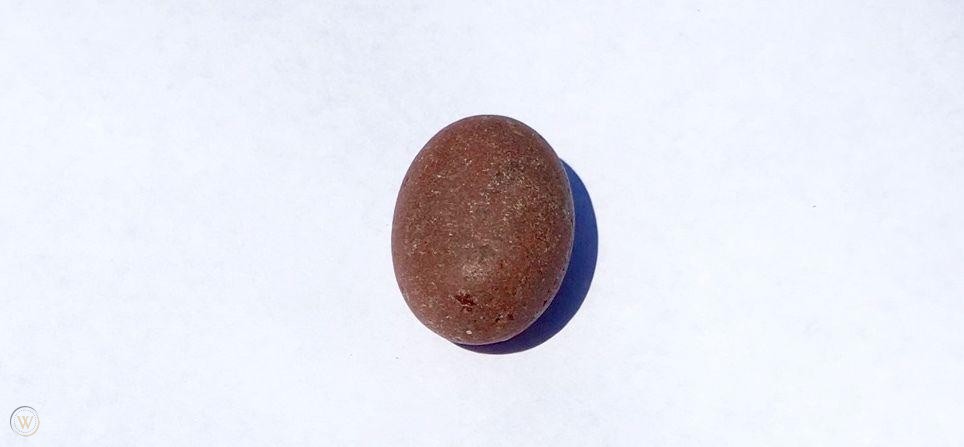
Varaha Mani: Boar Pearl
Varahamihira states in Brihat-Samhita, Chapter 51, “Very valuable and lustrous like the Moon is the pearl born of the root of the boar’s tusks… (they) possess inestimable virtues or excellences, no price has been fixed for them by the authorities.”
Gaja Mani: Elephant Pearl
Some varieties of Elephant Pearl are made up of a heavy dark brown substrate, while others are heavy balls, of varying colors, about the size of a Brain Coral, often with a hemispheric division.
The Garuda Purana states in Chapter LXIX (69) “Pearls found… in the temples of elephants and wild boars or in the mouths of whales or in the entrails of conch-shells, are devoid of lustre, though possessed of other auspicious virtues… Of the eight species of pearls described by the conoisseurs of gems, those obtained from conch shells and the temple of elephants should be deemed as standing in the bottom of the list as regards colour and brilliancy… A pearl found in the temple of an elephant is marked by the absence of any definite colour and is lustreless like a pearl found in the stem of a bamboo.
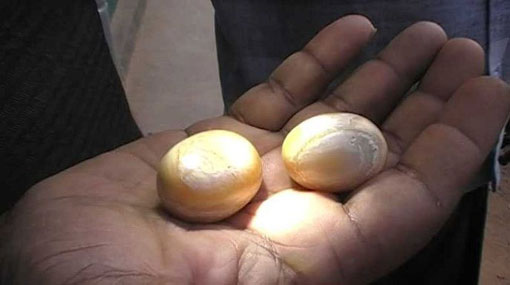
Gaja Mani: Elephant Pearl
Varahamihira states in Brihat-Samhita, Chapter 51 “The elephants that are born in the winter solstice (uttara-yapa) during an eclipse of the Sun or the Moon are named Bhadra. It is said that pearls are produced in the heads and in the sockets of the tusks of elephants of Airavata’s family at the Moon’s conjunction with the asterism Pusya or Sravana synchronous with a Sunday or Monday, as well as of the Bhadra class of elephants. These pearls are numerous, large, brilliant, and of various shapes. These are beyond any estimate and should not be perforated, being too brilliant. When they are worn by kings, they prove highly sanctifying and bestow children, victory, and sound health. “
Venu Mani: Bamboo Pearl
Bamboo Pearls are round or oblong, heavy, some off-white, rough and dry, resembling camphor crystals in color and texture, others are golden or a flowing green reminiscent of other minerals. They are between the size of a large marble and the upper joint of the thumb, with symmetrical markings.
The Garuda Purana states in Chapter LXIX (69) “Pearls found in the stems of bamboos… are devoid of lustre, though possessed of other auspicious virtues. A pearl obtained from inside the hollow stem of a bamboo resembles a hailstone in color, and is found only in bamboo that grows in the land of the honest and the pious, and not in every type of that grass. “
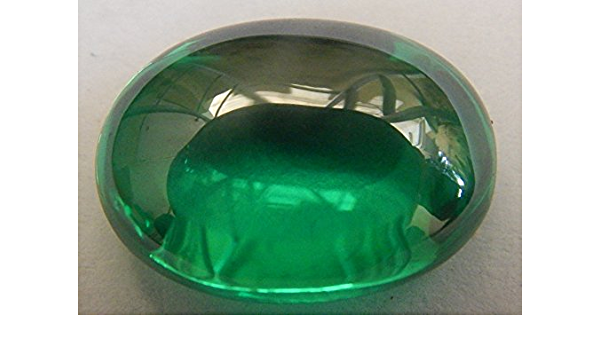
Venu Mani: Bamboo Pearl
Mahopanishad from the Samaveda VI-15(b)-16 states “Magnanimous one! Flawless cognitions swiftly fly to him who finds himself in his last birth, just as pure pearls lodge themselves in the best bamboo.”
Varahamihira states in Brihat-Samhita, Chapter 51 “A pearl is to be known to have sprung from bamboo if it resembles camphor or crystal and is flat and uneven (or rough)… they are considered extremely valuable and bestow sons, wealth, popularity, renown, and destroy disease, grief, while bestowing objects of desire upon kings.”
Timi Mani: Whale Pearl
Whale Pearls are rough-textured in a variegated pattern formation, moderately translucent, and about the size of a small egg. Several types of Whale Pearl have been observed, varying in texture.
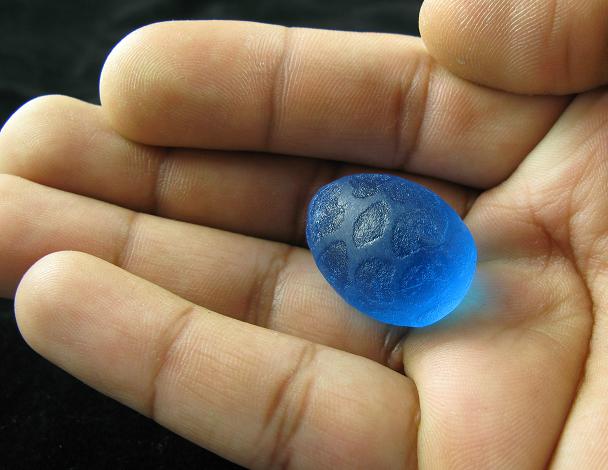
Timi Mani: Whale Pearl
The Garuda Purana states in Chapter LXIX (69) “Pearls found in the stems of bamboos or in the temples of elephants and wild boars or in the mouths of whales or in the entrails of conch-shells, are devoid of lustre, though possessed of other auspicious virtues.”
Varahamihira states in Brhat-Samhita, Chapter 51 “The pearls from whales resemble a fish’s eye, are large, pure, and of great value… the pearls from… whales… ought not to be perforated and as they possess inestimable virtues or excellences, no price has been fixed for them by the authorities. “
Matsya Mani: Fish Pearl
Fish Pearls are rough-textured with variegated pattern formations, moderately translucent, and about the size of a large marble. Several types of Fish Pearl have been observed, varying only in color (i.e. pink, white with a yellow-pink tint and light green with stratification) and texture.

Matsya Mani: Fish Pearl
The Garuda Purana states in Chapter LXIX (69) “A pearl found in the mouth of a fish is a perfect sphere in shape and is marked by a yellowish hue, like the back of a pathenam fish as is occasionally found inside the mouth of a whale that frequents the unfathomable depths of ocean beds. “
Mega Mani: Cloud Pearl
Cloud Pearls are traditionally known as approximating the size and shape of a chicken egg, with a translucent blue color, and having a distinct spiral running from bottom to top of outside surface area.
The Garuda Purana states in Chapter LXIX (69) “A cloud-grown pearl rarely reaches this mortal globe, and usually falls to the lot of the celestials. By illuminating the four quarters of the sky with its native lustre, a cloud-begotten pearl, like the sun dispels the gloom of a cloudy day. Outshining the combined effulgence of the fire, the moon, and the myriads of scintillating stars, such a pearl, like the dawn of day, can dispel the gloom of even the darkest night on earth.
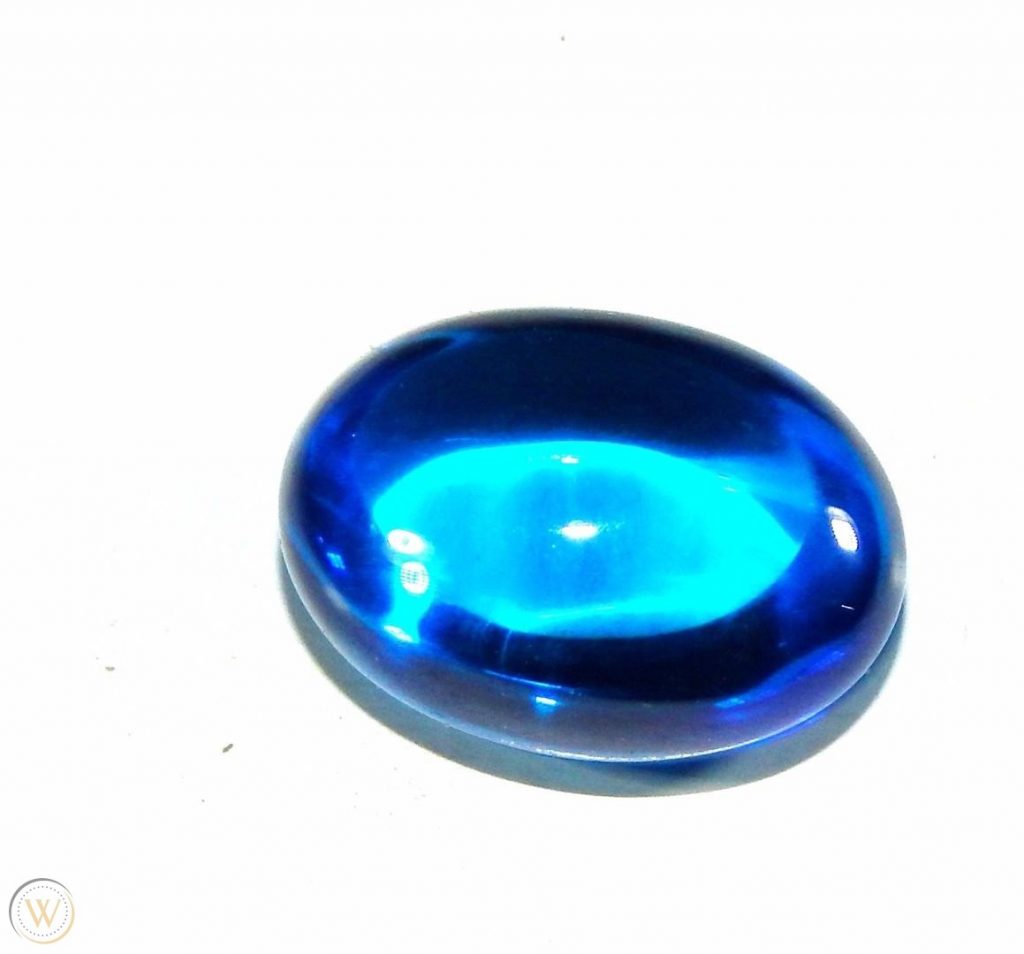
Megha Mani: Cloud Pearl
The whole earth, girdled by the four oceans containing innumerable gems in the fathomless depths, can not be deemed as the adequate price of such a pearl, even if she be covered over with layers of pure gold. A man, born in indigence and of humble parents, but happening to be the possessor of such a pearl, only through the transformation of a good deed done in a previous existence, is sure to be the paramount sovereign of the entire surface of the Earth. Not to the good deeds of the king alone, but to the better fortune of the whole humanity, should be ascribed the advent of such a man on earth, and no evil would ever strike the land to the extent of a thousand Yojanas (a Yojana is about 8 to 9 miles) round the place of his birth.”
Varahamihira states in Brhat-Samhita, Chapter 51 “They say that pearl is produced in the clouds of the seventh layer of wind in the sky in the manner of hail-stones. It falls there with the brilliance of lightning and is taken away (before it reaches the earth) by the denizens of heaven.”
You may like

Vastu Shastra (or short just Vastu) is the Indian science of space and architecture and how we may create spaces and environment that supports physical & spiritual health and prosperity.
Vastu Shastra evolved during Vedic times in India. The concept of Vastu Shastra was transferred to Tibet, South East Asia and finally to China and Japan where it provided the base for the development of what is now known as Feng Shui.
Vastu Shastra is the art and science of designing houses, offices, temples etc that swirl with good energy. Indian Maharajas and Moghul Emperors used Vastu Shastra when they built their symmetrical palaces, artificial lakes, and geometric courtyards that thirstily absorbed positive energy.
Like feng shui, Vastu Shastra is based on an octagon with the four directions being the anchors. Hindus believe that gods live in each of the quarters of the house, and govern the rooms, possessions, and activities in these locations.
Vasthu is an inherent energy concept of science. We cannot see energy with our naked eyes but we can realize and see its application in different forms and fashions. Vastu Shastra uses the forces of natural energies and aims to restore the balance between the home (the microcosm) and the cosmos (the macrocosm).
Vastu Shastra is not only a science, but is a bridge between man and nature, thus teaching us the Art of Living. Just like every subject of human aspect is governed with rules, regulations and acts, similarly the nature has also got certain key factor principles for smooth governing of its residents, in which Vastu Shastra stands for the law of natural energies.
Vastu, which literally means to live, works on the premise that the earth is a living organism, out of which other living organisms emerge. This life energy is known as Vaastu Purusha. The Vastu Shastra works for a bounded premise i.e., a house, building, industrial area or shop. The main aim is to form a balance between the outside atmosphere and the atmosphere within the premise. Vastu Shastra makes use of five elements – prithvi (earth), agni (fire), tej (light), vayu (wind) and akash (ether), the earth’s magnetic fields i.e. the north and the south pole and the sun’s rays.
History of Vastu Shastra
Vastu Shastra dates back to the times when the sages lived – probably 6,000 and 3,000 BC. The mention of Vastu Shastra can be found in ancient scriptures like the Rigveda, Atharvaveda, Ramayana, Mahabharata, Mayamatam, Manasa saar, etc. Ancient Indian architecture depended on this science for the building of almost all the palaces and temples. Although the exact origins of Feng Shui are debatable, it is thought to have originated about five thousand years ago. Scholars have recorded various aspects of Feng Shui as early as the Song Dynasty (960 BC). However, the basic principles of Feng Shui were first written down during the Han dynasty (25 AD).
How Vastu Shastra works
Vastu Shastra works on three principles of design that cover the entire premise. The first one is Bhogadyam, which says that the designed premise must be useful and lend itself to easy application. The second is Sukha Darsham, in which the designed premise must be aesthetically pleasing. The proportions of the spaces and the material used, in the interiors and exteriors of the building – ornamentation, colour, sizes of the windows, doors and the rooms and the rhythms of projection and depressions – should be beautiful. The third principle is Ramya, where the designed premise should evoke a feeling of well being in the user.
Also, Vastu Shastra is a complicated form of science put together by seventeen sages. There are certain rules that should be followed while building a house or a building. For instance, the building’s underground water tank or well should be situated in the northeast direction. But, if the building has an overhead tank then it should be placed in the southwest direction. Also, more space should be left to the north and the east of the building compound and less on the south and the west. Open space should be kept around the building and if the plot has a road on the east-north directions, it is better for the inhabitants.
Some short principles of Vastu Shastra
-
Indra, the god of gods, is positioned to the East. The East is where it all begins in Vastu Shastra. When people build their homes, the main door or the entrance is always facing the East. The eastern direction is the harbinger of good luck, which comes into the house through the door.
-
Kubera, the god of wealth, resides in the north. In this location some symbolic valuables should be placed to attract wealth.
-
The Northeast is the position for Dharma, the god of righteousness. In Vastu Shastra, this is the place for worship, meditation and introspection.
-
Agni, the god of fire, lives in the southeast corner. This should be the place of the kitchen.
-
Yama, the god of death, resides in the South. He prevents the evil eye from taking control of our lives. In India, people put a ghoulish pumpkin mask, similar to Halloween masks, in Yama’s position to ward off the evil eye.
-
Niruthi, who prevents homes from being robbed, dwells in the southwest corner.
Vedic Science
Description of Solar Eclipse in the Rig Veda
Published
5 years agoon
February 11, 2021By
Vedic Tribe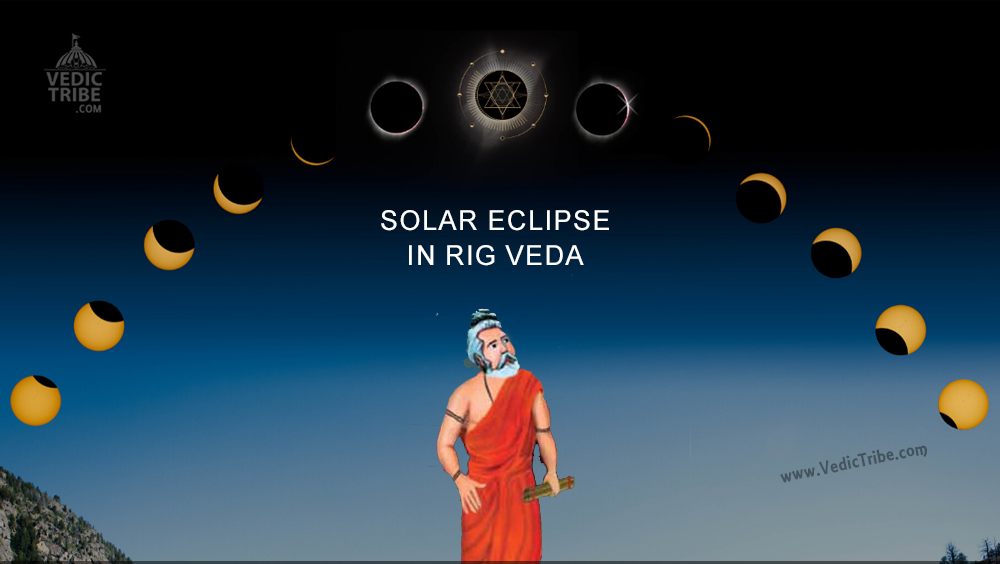
India is rich not only in its culture and traditional values but also in the vast knowledge ancient Vedic scriptures have to offer.
Among the four Vedas, the Rig Veda is the oldest. The others are Yajur, Sama and Atharva. They are a compilation of suktas or hymns from many different Sages over a vast span of historical time which is evident by different astronomical reference presented. Rishi Ved Vyas bundled these various hymns into different groups much after their creation.
It is in Rig Veda that Rishi Atri, the human son of Brahma, speaks of eclipses in metaphors of demons and devas.
In Chapter 5, Hymn 40 the Sage explains:
यत तवा सूर्य सवर्भानुस तमसाविध्यद आसुरः |
yat tvā sūrya svarbhānus tamasāvidhyad āsuraḥ |
O Sūrya, when the Asura’s descendant Svarbhanu, pierced thee through and through with darkness
अक्षेत्रविद यथा मुग्धो भुवनान्य अदीधयुः ||
akṣetravid yathā mughdho bhuvanāny adīdhayuḥ ||
All creatures looked like one who is bewildered, who knoweth not the place where he is standing.
सवर्भानोर अध यद इन्द्र माया अवो दिवो वर्तमाना अवाहन |
svarbhānor adha yad indra māyā avo divo vartamānā avāhan |
What time thou smotest down Svarbhanu’s magic that spread itself beneath the sky, O Indra,
गूळ्हं सूर्यं तमसापव्रतेन तुरीयेण बरह्मणाविन्दद अत्रिः ||
ghūḷhaṃ sūryaṃ tamasāpavratena turīyeṇa brahmaṇāvindad atriḥ ||
By his fourth sacred prayer Atri disoovered Sūrya concealed in gloom that stayed his function.
मा माम इमं तव सन्तम अत्र इरस्या दरुग्धो भियसा नि गारीत |
mā mām imaṃ tava santam atra irasyā drughdho bhiyasā ni ghārīt |
Let not the oppressor with this dread, through anger swallow me up, for I am thine, O Atri.
तवम मित्रो असि सत्यराधास तौ मेहावतं वरुणश च राजा ||
tvam mitro asi satyarādhās tau mehāvataṃ varuṇaś ca rājā ||
Mitra art thou, the sender of true blessings: thou and King Varuṇa be both my helpers.

गराव्णो बरह्मा युयुजानः सपर्यन कीरिणा देवान नमसोपशिक्षन |
ghrāvṇo brahmā yuyujānaḥ saparyan kīriṇā devān namasopaśikṣan |
The Brahman Atri, as he set the press-stones, serving the Gods with praise and adoration,
अत्रिः सूर्यस्य दिवि चक्षुर आधात सवर्भानोर अप माया अघुक्षत ||
atriḥ sūryasya divi cakṣur ādhāt svarbhānor apa māyā aghukṣat ||
Established in the heaven the eye of Sūrya, and caused Svarbhanu’s magic arts to vanish.
यं वै सूर्यं सवर्भानुस तमसाविध्यद आसुरः |
yaṃ vai sūryaṃ svarbhānus tamasāvidhyad āsuraḥ |
The Atris found the Sun again, him whom Svarbhanu of the brood
अत्रयस तम अन्व अविन्दन नह्य अन्ये अशक्नुवन ||
atrayas tam anv avindan nahy anye aśaknuvan ||
Of Asuras had pierced with gloom. This none besides had power to do.
The Sage describes how Svarbhanu created eclipses of the Sun and Moon and how Sun appears after an eclipse in the sky.
Svarbhanu is Sva+Bha+Anu.
Sva means sky. Bha means light. Anu means follower. Compiled together it means follower of light that is present in the sky. This phenomenon of eclipse is seen due to this shadow where the word Asura stands for the shadow of the moon and not a demon.
Rig Veda says that Svarbhanu was not from the heaven but from the earth, which explains that the moon is a natural satellite of the earth and that it does not have its own brightness but rather reflects the light of the sun.
As shadow of the moon starts covering a large part of the sun, the red tinge of the solar chromosphere becomes visible which is described as the red sheep by Rishi Atri.
When the full solar eclipse takes effect, only the corona can be seen. This is described as the colour of silver sheep. When the eclipse is completely over, the sun is restored to its original bright lustre which is described as the colour of white sheep.
In the fifth stanza tells of all the creatures being frightened and in a terrible condition during the full solar eclipse. The Sage explains that the darkness at the time of this eclipse is different from the normal darkness of the night. The most affected by this darkness are the birds and animals.
It is a well known fact that India’s rich Vedic tradition has had a powerful influence in the field of astronomy and many eclipse events are well documented in the ancient scriptures.
(English translation of the Vedas by Ralph Griffith)
Vaastu Shastra
Vastu for Pooja Room in Home for Positive Energy
Published
5 years agoon
February 5, 2021By
Vedic Tribe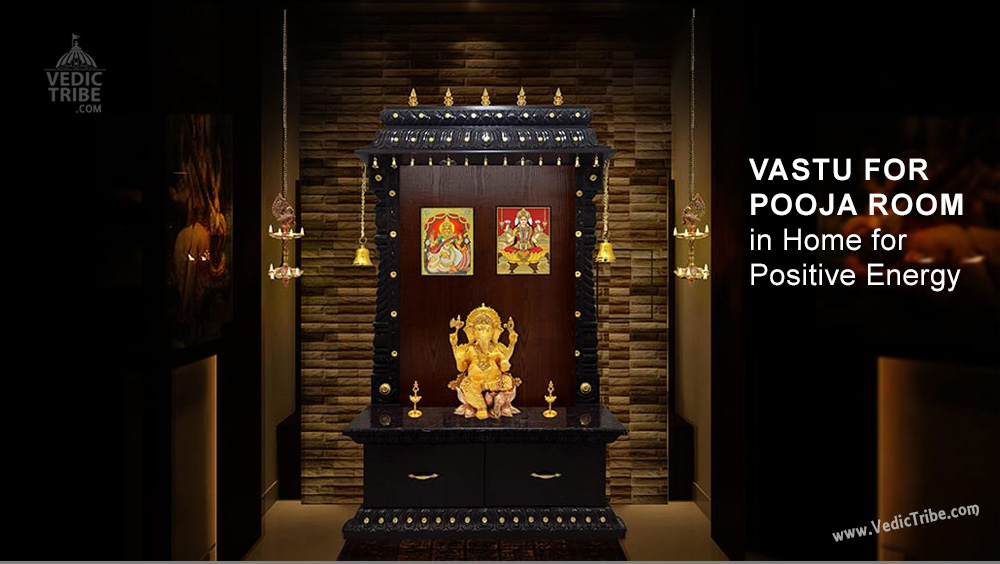
In the present times, Vastu Shastra is the most commonly used term, especially when it comes to purchasing or constructing a new home. To have a happy and prosperous household you must lay stress on enhancing the positive energy inside your home. Vastu Shastra increases wealth, well being and prosperity if you live in structures that allow positive cosmic forces.
One of the most important and sacred corner in any home is a zone of tranquility, the prayer or meditation area; usually known as ‘Pooja Ghar’. Although placement of a Puja Ghar itself brings positive energies in a home, but designing this sacred place as per Vastu guidance enhances positivity in the environment all around. According to Vastu Shastra, the North East zone or the Eeshan (Ishan) corner of a house is the best suited area for placing the Puja room.
It is believed that when Vastu Purush was brought down to the earth, his head laid in the north-east direction. So, while worshipping in this direction along with coming closer to the deity, we also pay obeisance to him. The direction also receives the purifying rays of the rising sun, which purifies the environment and brings positivity and prosperity into our homes.
Follow the below mentioned attributes in order to get an ideal Puja room:
- Never locate the Puja room in the south and the south-east, as these directions are ruled by Yama and Agni, respectively.
- Never locate the Puja space in the bedroom, as this place is for rest and pleasure. However if there is no choice, locate it in the north-east corner of the room. Take care that your feet do not point towards this corner while lying on the bed.
- Avoid locating the toilet above, below or opposite to this room to prevent the negative energies of the toilet from spoiling the auspicious atmosphere of the Puja room.
- This room should also not be constructed next to the kitchen or located under a staircase. In case you do make the Puja space in the kitchen, keep the deity in such a way that you face east while praying.
- In very big plots, factories or apartments, the prayer room can be located in the centre or the Brahmasthana, the sector governed by Lord Brahma, the Creator.
- Make the roof of the Puja room dome or pyramid-shaped. This facilitates smooth flow of positive energies from the tip to the dome or pyramid into the puja room. This shape also assists in meditation.
- Use tranquil colours on the walls of the Puja room like white, soft shades of yellow, blue or violet. These colours do not distract while praying.
- Ideally, the doors and windows of this room should open towards the east or north. These should be made of good quality wood and have double shutters.
- Although north-east is generally the direction recommended for locating the idols or pictures of various Gods; yet different deities have different auspicious locations as described:
- Brahma, Vishnu, Mahesh, Kartikeya, Indra and Surya are placed in the east and facing towards west.
- Ganesh, Durga, Kuber, Shodas Matrika and Bhairav in the north direction and facing south.
- Hanuman in the north-east facing south-west, but never in the south-east as it creates fire hazard.
- Never keep idols brought from ancient temples in the puja room. Also avoid Shrichakra and Shaligram idols, unless you have tremendous spiritual control and are capable of performing puja in a traditional manner.
- Never display photographs of the dead family members along with the deities.
- The height of idols should not be more than 18 inches and should always be placed on a high platform or singhasan.
- Keep the holy books or dharmic granths and other items of samagri and dresses of the deities along the west and south wall.
- The lamp or deepak should be placed in the south-east direction, governed by Agni.
- The Puja room should not be used for other purposes, like storing items that do not belong here. It should also not be used for sleeping purposes or to conceal money and other valuables.
- Never keep a dustbin in the Puja room, as the positive energy gets diminished due to the negative energies emitted by it.
- If you ensure the above mentioned points, you would not only add to the serenity of the room, but would also find yourself spiritually uplifted with increased powers of meditation.
- Dr. Prem Kumar Sharma, resident astrologer of Hindustan Times and Vastu consultant, has authored many books including ‘A Comprehensive Book on Vastu’ and ‘Cultivate Your Relationship the Vastu Way’.
~ By Astrologer Dr. Prem Kumar Sharma
Follow us on Facebook
Follow us on Twitter
Latest


Seven Vows and Steps (pheras) of Hindu Wedding explained
Views: 9,199 Indian marriages are well renowned around the world for all the rituals and events forming part of the...


Sari or Saree is symbol of Indian feminism and culture
Views: 7,422 One of the most sensual attires of a woman in India is undoubtedly the sari. It is a...


Atithi Devo Bhava meaning in Hinduism and India
Views: 7,190 Atithi Devo Bhava, an ancient line taken from the Hindu scriptures and was originally coined to depict a visiting person whose...


Sanskrit Is More Than Just A Method To Communicate
Views: 5,390 -By Ojaswita Krishnaa Chaturvedi anskrit is the language of ancient India, the earliest compilation of sound, syllables and...


Significance of Baisakhi / Vaisakhi
Views: 6,613 Baiskhi is also spelled ‘Vaisakhi’, and is a vibrant Festival considered to be an extremely important festival in...


Navaratri: The Nine Divine Nights of Maa Durga!
Views: 7,719 – Shri Gyan Rajhans Navratri or the nine holy days are auspicious days of the lunar calendar according...


History of Vastu Shastra
Views: 10,936 Vastu Shastra (or short just Vastu) is the Indian science of space and architecture and how we may...


Significance of Bilva Leaf – Why is it dear to Lord shiva?
Views: 10,565 – Arun Gopinath Hindus believe that the knowledge of medicinal plants is older than history itself, that it...


Concept of Time and Creation (‘Brahma Srishti’) in Padma Purana
Views: 10,847 Pulastya Maha Muni affirmed to Bhishma that Brahma was Narayana Himself and that in reality he was Eternal....


Karma Yoga – Yog Through Selfless Actions
Views: 9,721 Karma Yoga is Meditation in Action: “Karma” means action and “yoga” means loving unity of our mind with...

